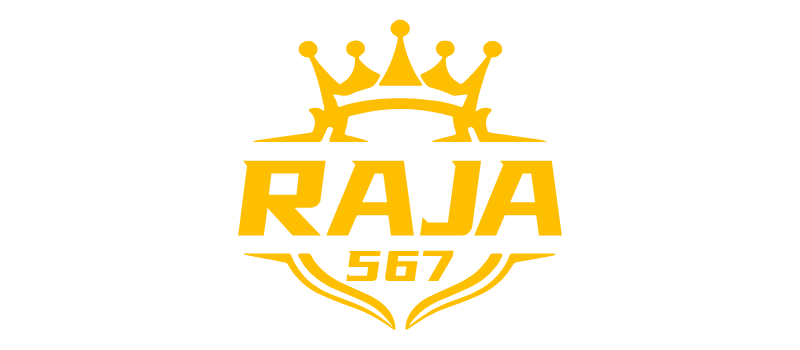Tiger vs Dragon: Ultimate Strategy Guide
Introduction: Understanding the Core Conflict
The Historical & Cultural Significance of Tigers & Dragons
For millennia, the tiger and the dragon have captivated human imagination, embodying powerful forces in mythology and culture. The tiger, often representing courage, strength, and untamed power, is revered in many Asian traditions. Conversely, the dragon, a symbol of wisdom, longevity, and benevolent power, holds a similarly esteemed position. These archetypes aren't merely symbolic; they represent fundamental approaches to navigating conflict and achieving objectives. Understanding these historical roots provides a deeper appreciation for the strategic implications. Looking for a reliable platform? Many find raja567 login to be a good starting point for exploring various strategies, even if indirectly applicable.
Defining “Tiger” and “Dragon” in a Strategic Context
In a strategic context, the “Tiger” embodies a direct, assertive, and often aggressive approach. Think of a predator – swift, decisive, and focused on immediate impact. The “Dragon,” however, is characterized by cunning, patience, and long-term planning. It’s less about brute force and more about subtle influence and calculated maneuvers. Those interested in predictive elements might explore a dragon tiger prediction tool to understand probability and calculated risks.
Why This Opposition Matters - Applications
The Tiger vs. Dragon dynamic isn’t limited to ancient folklore. It manifests in countless real-world scenarios. In business, a “Tiger” might launch a hostile takeover, while a “Dragon” might slowly build a controlling interest through strategic partnerships. In negotiations, one side might employ aggressive tactics, while the other favors a more collaborative, long-term approach. This framework provides a powerful lens for analyzing power dynamics and formulating effective responses. Many online platforms, like raja567. com login, offer interesting case studies that subtly reflect these dynamics.

Decoding the “Tiger” Strategy
Core Characteristics: Assertiveness, Directness, Strength
The Tiger strategy is built on a foundation of confidence and dominance. It favors direct communication, swift action, and a willingness to confront challenges head-on. There’s little room for ambiguity or hesitation.
Tiger Strengths: Speed, Power, Decisiveness
The Tiger’s greatest strengths lie in its ability to react quickly and decisively. It can overwhelm opponents with sheer force and seize opportunities before others can respond. This is particularly effective in situations requiring immediate action.
Tiger Weaknesses: Impulsiveness, Aggression, Lack of Flexibility
The Tiger’s reliance on force can also be its downfall. Impulsiveness can lead to errors in judgment, and aggression can alienate potential allies. A lack of flexibility can make it vulnerable to more adaptable strategies.
Situations Where the Tiger Strategy Excels
The Tiger strategy thrives in situations demanding swift action, clear leadership, and a willingness to take risks. Crisis management, competitive markets, and situations requiring immediate control are all fertile ground for the Tiger approach.
Common Tiger Tactics: Leading with Force, Establishing Dominance, Direct Confrontation
Typical Tiger tactics include aggressive marketing campaigns, hostile takeovers, and direct challenges to authority. The goal is to establish dominance and force compliance.
Decoding the “Dragon” Strategy
Core Characteristics: Cunning, Patience, Indirectness
The Dragon strategy prioritizes subtlety, patience, and indirect influence. It favors long-term planning and the manipulation of circumstances to achieve its goals.
Dragon Strengths: Long-Term Vision, Strategic Patience, Adaptability
The Dragon’s ability to see the big picture and plan for the future is its greatest asset. Its strategic patience allows it to wait for the opportune moment, and its adaptability enables it to overcome obstacles. Understanding tiger vs dragon dynamics is crucial for long-term success.
Dragon Weaknesses: Slow to React, Can Appear Manipulative, Relies on Complexity
The Dragon’s patience can sometimes morph into inaction. Its reliance on subtlety can be misinterpreted as manipulation, and its complex plans can be vulnerable to disruption.
Situations Where the Dragon Strategy Excels
The Dragon strategy shines in situations requiring long-term planning, building relationships, and navigating complex systems. Political maneuvering, strategic investments, and market positioning are all areas where the Dragon approach can excel.
Common Dragon Tactics: Subtlety, Influence, Building Alliances, Long-Term Planning
Common Dragon tactics include lobbying, forming strategic partnerships, and investing in emerging technologies. The goal is to shape the environment to its advantage.
Tiger vs. Dragon: Direct Confrontation Scenarios
Analyzing the Clash: Tiger's Initial Advantage
In a direct confrontation, the Tiger typically holds the initial advantage. Its speed and power can overwhelm the Dragon before it has a chance to fully implement its plans.
Dragon's Counter-Strategies: Wearing Down the Tiger
The Dragon’s counter-strategy involves wearing down the Tiger over time, exploiting its weaknesses, and avoiding direct confrontation. It utilizes patience and calculated maneuvers to erode the Tiger’s strength.
Avoiding the Tiger's Strength: Deflection & Circumvention
The Dragon avoids the Tiger’s strength by deflecting attacks and circumventing obstacles. It doesn't try to match the Tiger's brute force but instead redirects its energy.
Exploiting the Tiger's Weakness: Provoking Impulsiveness
The Dragon can exploit the Tiger’s impulsiveness by baiting it into rash decisions. By creating situations that trigger the Tiger’s aggression, the Dragon can gain a strategic advantage.
Winning the Long Game: Dragon’s Strategic Patience
Ultimately, the Dragon aims to win the long game by patiently eroding the Tiger's strength and positioning itself for ultimate success.

Advanced Strategies: Adapting to the Opponent
“Mirroring” Techniques: Adapting Your Approach
Mirroring involves subtly adopting the opponent’s style to build rapport and gain trust. This can be particularly effective when dealing with a highly assertive Tiger or a cunning Dragon.
The “Bamboo” Strategy: Bending with the Wind
The Bamboo strategy involves being flexible and adaptable, bending with the wind rather than breaking. It’s about absorbing shocks and adjusting to changing circumstances.
Neutralizing the Tiger: Establishing Boundaries & Calmness
To neutralize a Tiger, it’s crucial to establish clear boundaries and remain calm under pressure. Don’t get drawn into emotional confrontations.
Leveraging the Tiger’s Strength: Collaborating for Mutual Benefit
Sometimes, the best approach is to leverage the Tiger’s strength for mutual benefit. By finding areas of common ground, you can harness its power to achieve shared goals.
Disarming the Dragon: Transparency and Direct Communication
To disarm a Dragon, transparency and direct communication are essential. Expose its hidden motives and challenge its subtle manipulations.
Applying the Tiger vs Dragon Framework – Real-World Examples
Business Negotiations: When to Be Tiger, When to Be Dragon
In business negotiations, knowing when to adopt the Tiger or Dragon strategy is crucial. A Tiger approach might be appropriate when demanding a quick decision, while a Dragon approach is better suited for building long-term relationships.
Leadership Styles: Identifying and Managing Tiger & Dragon Personalities
Effective leaders can identify and manage both Tiger and Dragon personalities within their teams. Understanding their motivations and leveraging their strengths is key to success.
Conflict Resolution: Navigating Disputes with Strategic Awareness
The Tiger vs. Dragon framework can provide valuable insights into conflict resolution. By understanding the underlying dynamics, you can tailor your approach to achieve a favorable outcome.
Personal Relationships: Understanding Dynamics and Improving Communication
The same principles apply to personal relationships. Recognizing whether you or your partner tend towards the Tiger or Dragon archetype can help improve communication and resolve conflicts.
Political Strategy: Analyzing Power Plays and International Relations
In the realm of political strategy, the Tiger vs. Dragon framework can be used to analyze power plays and understand international relations.
Self-Assessment: Which “Animal” Are You?
Identifying Your Natural Inclinations
Take some time to reflect on your natural inclinations. Do you tend to be assertive and direct, or more patient and subtle?
Developing Your Weaker Traits: Becoming More Versatile
Regardless of your natural inclinations, it’s important to develop your weaker traits. A truly effective strategist is versatile and adaptable.
Leveraging Your Strengths: Maximizing Your Strategic Impact
Once you’ve identified your strengths, focus on leveraging them to maximize your strategic impact.
Conclusion: Mastering the Art of Strategic Adaptation
The Importance of Context & Flexibility
The Tiger vs. Dragon framework is a powerful tool, but it’s important to remember that context is everything. Flexibility and adaptability are crucial for success in any situation.
Beyond Tiger & Dragon: Recognizing Other Strategic Archetypes
While the Tiger and Dragon represent fundamental strategic archetypes, there are many other approaches to consider.
Continuous Learning & Refinement – The Path to Mastery
Mastering the art of strategic adaptation requires continuous learning and refinement. Stay curious, observe your surroundings, and constantly challenge your assumptions. For those interested in exploring further, platforms like raja567 login sometimes feature discussions on strategic thinking. Don’t forget to explore opportunities related to a dragon tiger prediction tool to enhance your analytical skills.


